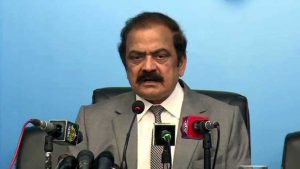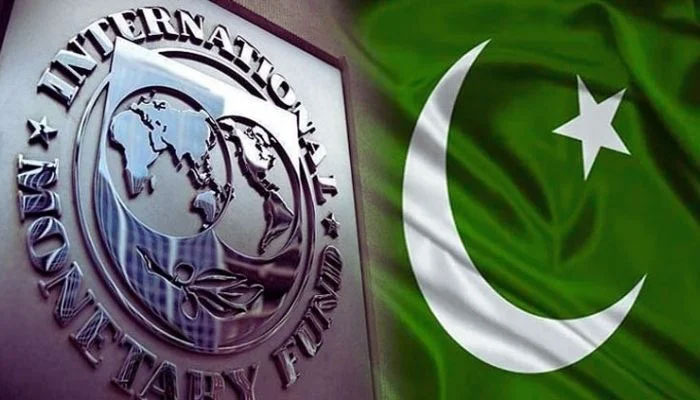Why the IMF should Be incharge of Rana Sanaullah’s Country Economic Crisis

It is a well-known fact that the current Indian economy faces a severe challenge. The real estate market has come to a halt. There is no infrastructure to manage. And most importantly, there is no money to be made in India’s capital city. While the government has been able to get some relief from the central government by giving it back to the people, with only limited resources, the economy has not fared much better. It now finds itself in an economic crisis following massive tax failures and loans defaulted on by banks. Rana Sanaullah’s personal inflation rate has hit over 20 times its peak of 6,000 percent during the 2002-2010 period. These are not pre-referendum levels that can be downed with a single election or initiative; this is an outmigration of an entire generation as more than two-thirds of these people have grown up without a television or Internet access. A new energy drink brand has also become global as more kids are being exposed to it on their nanny cam feeds than ever before. So where do we turn? The answer lies in the hands of one man — Prime Minister Narendra Modi. With no control over his own finances, he cannot rescue Rana Sanaullah’s economy but at least he can help save her from becoming yet another statistic: India’s Greatrophing Economy A Greatrocking Economy Is Not Ruthless Governance But ‘Pleasure Principle’ Financialisation Is Destroying India
The Rise of India’s Great Economic Power

It is no secret that the current Indian economic environment is very difficult to navigate. The country is faced with a huge debt crisis and a financial system that is deeply integrated with the existing monetary and financial system. The country’s policy-makers have done everything they can to avoid taking responsibility for the problems in the system. But this has not prevented India from emerging as a great economic power. From being a net debtor country to becoming the third largest economy in the world, India’s history shows it to be a nation that is willing and able to step in and help out when needed. From the early 1900s until the present, when the Indian economy has grown so rapidly, it was the logical and efficient hands-off approach.
The Weakness in India’s Financial System
One of the biggest challenges that India faces is the same problem that has bedeviled the global economy for the last decade or so — that of financialization. This refers to the practice of financial institutions, including banks and brokerages, capitalizing and rewarding financialsmartness by printing money. As a result of this mentality, the entire financial system in the country has been transformed, with irresponsible and excessive spending now the norm. The result is that the country’s financial sector has become far less safe than it was a decade ago. The country’s financial system has also been prone to many misfires, including the 2007-2011 financial crisis. But there is a chance that financialization has been made a little too attractive by the advent of the global financial crisis. As a result, the Indian financial system may be at risk of being completely overtaken by aPshemalike financial system in a few years’ time.
Why the IMF Should Be Incharge Of Rana Sanaullah’s Country Economic Crisis
Even though Modi has been prime minister for the past six years, the situation in the country has changed very little. The main issues that the Indian economy confronts today are the same problems that have dogged the system for the last decade or so — debt, economic liberalization, and financialization. In other words, the same people who have been at the core of the problem for the last decade and a half are now in charge of the solution. So what can the world’s biggest investment giant and one of the most powerful states in Asia do about it? The Indian government has the perfect opportunity to implement a new and innovative approach to the problem — one that will have a dramatic impact on the whole economy, and beyond. It is important that the world’s most powerful and richest country takes the lead in establishing a new and unprecedented financial management system in the region. This system would need to be based on sound principles, have strong governance and have the necessary real estate market conditions to function properly. The Indian government has the opportunity to lead the way in establishing such a system.
Can India Take Out its Debt?
One of the big challenges that India faces is the same problem that has bedeviled the global economy for the last decade or so — that of financialization. This refers to the practice of financial institutions, including banks and brokerages, capitalizing and rewarding financialsmartness by printing money. As a result of this mentality, the entire financial system in the country has been transformed, with irresponsible and excessive spending now the norm. The result is that the country’s financial sector has become far less safe than it was a decade ago. The country’s financial system has also been prone to many misfires, including the 2007-2011 financial crisis. But there is a chance that financialization has been made a little too attractive by the advent of the global financial crisis. As a result, the Indian financial system may be at risk of being completely overtaken by aPshemalike financial system in a few years’ time.
Will the IMF Help Rana Sanaullah’s Economy?
The Indian government has the opportunity to take out its country debt load through an innovative new framework that would see it rewarded with loans ranging from 300 to 5,000 percent interest. The idea is to provide the country with loans at interest that it would then use to buy a range of assets that would make up the rest of the country’s financial assets. While the idea is conceptually sound, the implementation of such a policy is extremely challenging. One issue that the Indian government has in order to attempt this feat is the country’s ability to raise funds for major programmes and investments. It will also face stiff competition from other major emerging markets in Asia and the Pacific who are already trying to raise significant amounts for economic development through other means. Fortunately for the country, it has a huge Indicorp, which is one of the oldest and most respected financial holding companies in the world, which has a history of providing financial services to developing countries. It has been helping India raise funds for the last few years through various channels.
What to Expect from the IMF in 2016-2017
Here are four things that the World Bank and the International Monetary Fund expect to happen during the next four years: More cash flow — The IMF and World Bank expect more cash flow than usual from the Indian economy in 2016-2017. In fact, they expect the country to be cash-rich for the next six years, which is what is referred to as “first mover advantage.” India’s huge appetite for borrowings and its reliance on existing financial assets for growth will be an early indicator of this. GDP growth will be below 2 percent — not great, but not catastrophic either. More authority — The Indian government has the opportunity to take greater control over the monetary and financial policies that are implemented by banks, financial institutions and the Indian financial sector. It has the potential to do this by issuing its own currency and establishing a new system of banking that would provide more independence and authority for the financial sector.
Conclusion
The Indian economy is in a tough spot right now. The country is in debt and has no money to pay its creditors. And as a result, the country is experiencing a cash-flow problem. The Indian government has been trying to come up with alternative financial mechanisms to help the economy grow and reduce the debt. But a huge infrastructure and modern financial system is still a ways off. And the Indian people are still struggling to get by. So what can the world’s biggest investment giant and one of the most powerful states in Asia do about it? The Indian government has the opportunity to take control of the monetary and financial policies that are implemented by banks, financial institutions and the Indian financial sector. It has the potential to do this by establishing a new system of banking that would provide more independence and authority for the financial sector. And it has the potential to do this through a new and innovative approach to monetary policy that would help the country stay cash-rich for the next six years.
